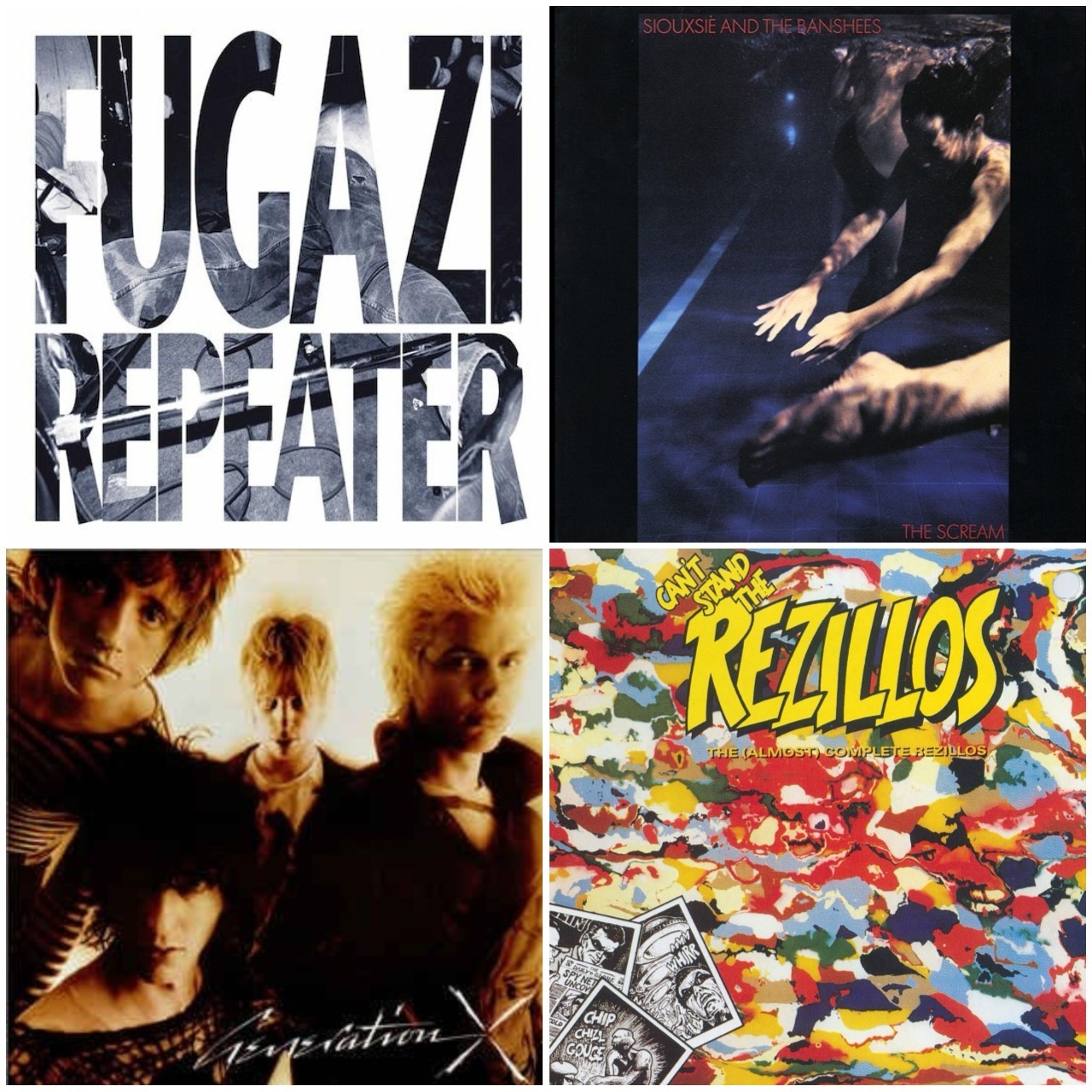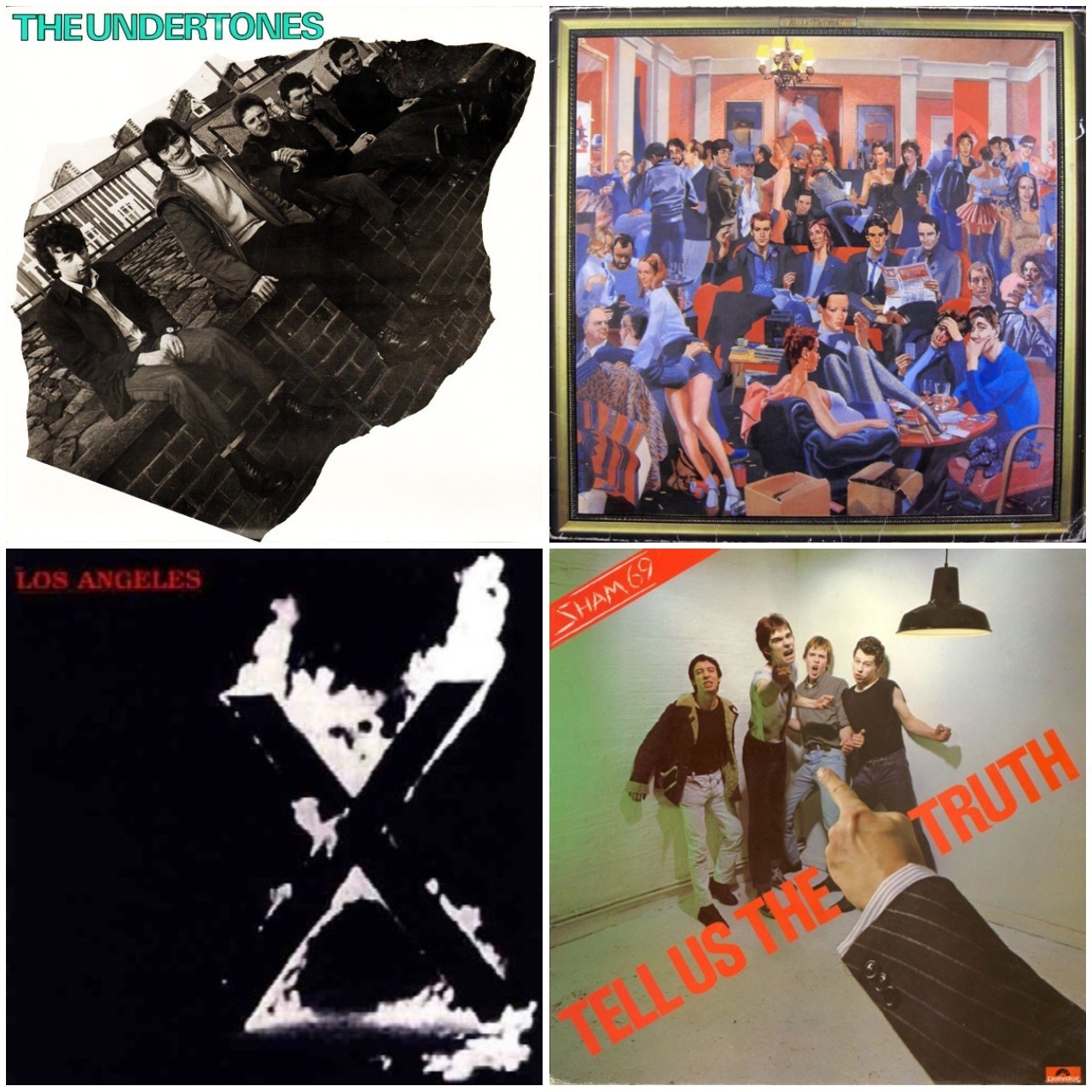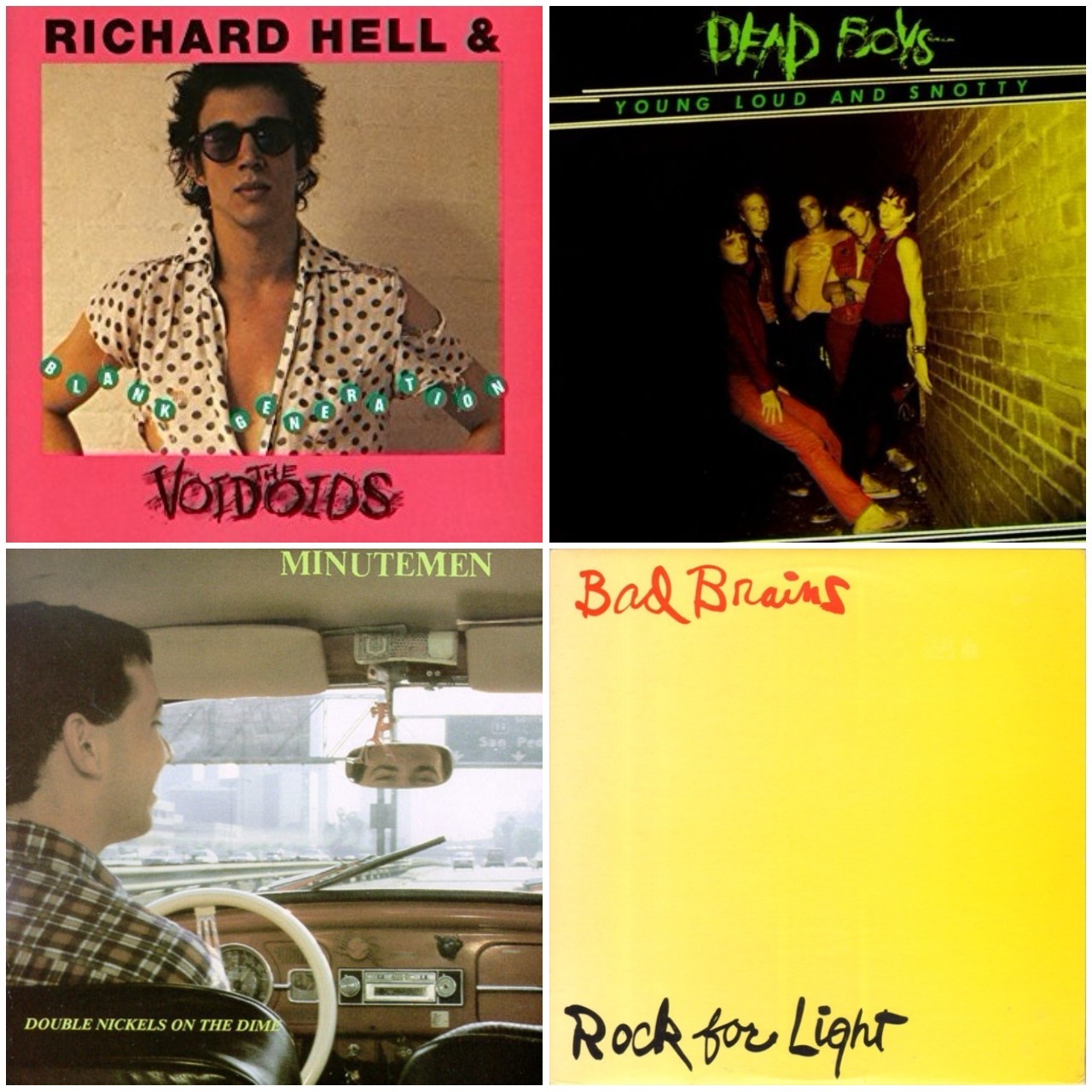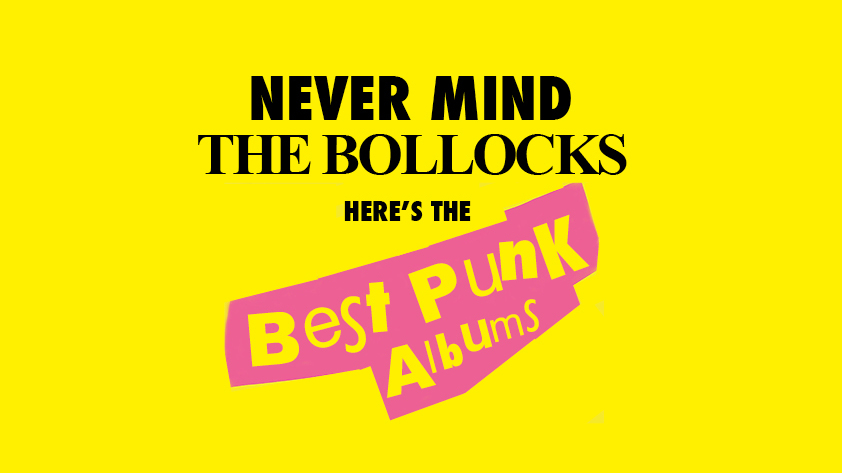As much an attitude as a genre of music, you’d struggle to find another chapter in music’s history which has been so influential or so controversial as punk.
From its ramshackle beginnings on the USA’s East Coast, where bands as diverse as the Velvet Underground, and the hamburger-and-wrestling-obsessed Dictators were fused by nothing more than their shared, snarling attitude, punk developed a few key characteristics: a propensity for both fearless experimentation and rampant nihilism. When it hit the shores of the UK in a sneering ball of rage and spit, that energy was distilled into a white hot and purposefully anarchistic expression of the disillusion and discontent that came from life in the forgotten corners of Thatcher’s Britain. Its lead protagonists were fearsome, wild-eyed, intimidating and exhilarating all at once, and laid out a blueprint which would become a touchstone not just for punk’s legacy, but that of modern alternative music as we know it.
“It’s one of those clichés, but punk rock absolutely changed my life,” The Undertones’ bassist Michael Bradley told us. “I’m one of those people who was lucky enough to have been born at exactly the right time, because I turned 18 in 1977 as the first wave of these incredible records were being released. Obviously everyone thinks that their music taste is amazing at that age, but really, what a time to be a music fan.”
Picking the albums which should even make the long-list for this feature was almost impossible, not least when you consider the sheer amount of offshoots and sub-genres punk has inspired along the way – and that’s before you make your way to the arguments about what really counts as a punk album. So, we deferred to the wisdom of the public and asked our readers what they thought. From a long-list of 65 albums, these are the albums our voters designated the jewels in punk rock’s crown. Like always, there are worthy omissions of those who just didn’t quite make the cut – UK Subs, Germs, Exploited, we’re pouring one out for you – but in a genre as expansive and influential as punk, there’s never going to be room for everyone.
So, here we have it: the best 50 punk albums of all time, as voted for by Louder readers. With a ‘Hey’ and a ‘Ho’, let’s go…

50) Fugazi – Repeater (1990)
In 1987, US punk was in a sorry state. West Coast stalwarts Black Flag, the Dead Kennedys and the Descendents had all split up, violence was increasingly common – if not a given – at gigs, and creativity was at an all-time low. But spurred on by this stagnant musicianship, the underground DC scene on the East Coast underwent what came to be known as ‘revolution summer’ in 1985. With the emergence of Dischord Records acts like Rites Of Spring and ex-Minor Threat man Ian MacKaye’s Embrace project, the sounds of late 80s DC held a massive influence over the evolution of punk in the years that followed.
Perhaps most remarkable of all these bands was Fugazi. Made up of ex-Rites Of Spring men Guy Picciotto and Brendan Canty, plus Joe Lally and Ian MacKaye, Fugazi are a band who’ve never quite been surpassed in the post-hardcore scene. With their debut album Repeater, the band displayed exemplary musicianship. Canty’s astonishing drumming makes him sound like he has at least three arms (Brendan #1); the tightest rhythm section outside Black Sabbath completed by Joe Lally’s galloping bass. MacKaye and Picciotto share the role of frontman equally. Not unlike Greg Ginn’s (Black Flag) style, their guitars are used for percussion and rhythm as much as for melody on this, Fugazi’s breathtaking mission statement.
49) Generation X – Generation X (1978)
While you might be more familiar with Billy Idol in his guise as the flaxen-haired chart topper responsible for White Wedding and other such 80s new-wave hits, he first cut his teeth as one quarter of raucous London punks Generation X. Formed, as all the best bands did, through an advert placed in the back pages of the Melody Maker, with their first self-titled album they paired gleeful, snotty punk rock with Idol’s keen eye for melody, drawing the ire of Johnny Rotten in the process – making clear they were onto a good thing.
“Generation X are one of my favourite punk bands,” Misfits bassist Jerry Only told TeamRock in 2016. “Billy Idol moved on, and as record companies saw stars rise from the ashes of punk rock, Billy became more pop and new wave. Record labels couldn’t handle punk rockers because they couldn’t control them; they didn’t want to invest money in kids who were a bunch of fuck-ups. Generation X were amazing.”
It’s true that Idol couldn’t keep his predilection for pop under wraps for long – a fact adeptly displayed by Generation X becoming one of the first UK punk bands to appear on Top Of The Pops in late ‘77. Not long after, the band’s descent into obscurity began. Idol fixed his eyes on the bright lights and departed for the charts in 1979.
48) Siouxsie And The Banshees – The Scream (1978)
While punk’s musical and sonic revolution is often overplayed – the Sex Pistols’ roots in Chuck Berry and The Who were obvious, The Damned had clearly heard the MC5 and the Stooges – The Banshees’ first album was a genuinely startling game-changer. The songwriting had few obvious antecedents, guitars slashed like razors, the drums all tom-toms and splashing cymbals, and then there was the voice: maybe only Grace Slick had eschewed soul and blues cliches as much as Siouxsie Sioux.
No simpering chanteuse, Susan Janet Ballion had transformed herself into a formidable vocalist and front woman – part dominatrix, part ice queen – a provocateur who would almost single-handedly change the way female (and male) post-punk fans dressed in the 80s. Known for wearing a swastika in the early parent-baiting days of punk, by The Scream Siouxsie was atoning (nah, fuck that) clarifying her position with Metal Postcard, inspired by the anti-Nazi art of John Heartfield (the 7” version had Heartfield’s art on its cover).
Intense, harrowing, nightmarish, The Scream sneered at rock’n’roll cliches – its big sound, courtesy of engineer Steve Lillywhite, a man who would go on to define the sound of the 80s – with even The Beatles’ Helter Skelter turned into the darkest of bad trips (and knowingly chosen as the song that inspired the Manson murders). It made punk rock – all those boys with their Les Pauls preening with their legs akimbo – seem old hat. Here was a new way. Post-punk was born.
47) The Rezillos – Can’t Stand The Rezillos (1978)
Best known for their debut 1978 album – which spawned Top 20 hit Top Of The Pops – The Rezillos were like Scottish cousins of The B-52s; Edinburgh art students who brought a dayglo trash-pop aesthetic to punk. Falling somewhere between punk rock and new wave, the album highlighted that punk music functioned at its best when it dared to experiment, leading Trouser Press to dub the band “a blast of fresh air compared to the more serious bands of new wave’s first charge.”
“High-octane goofballs Rezillos mixed surf rock, garage, glam, rockabilly and New Wave quirko-costumes into a punk-rock band that feels like the B-52’s if they listened to more Cramps than Chic,” wrote Rolling Stone in 2017. “Their lone studio album (until a 2015 reunion), Can’t Stand The Rezillos combines the greasy kids’ stuff of 50s sci-fi (Flying Saucer Attack, 2000 A.D.), the giddy highs of the 60s beat groups (covers of Dave Clark Five, and Gerry and the Pacemakers), and the art-school-hewn drollness of 70s post-punk.”
“We all came from a similar place and we met somewhere that set us in a similar direction, which was to do something that was very rock & roll–y and drawn from lots of arty things that had to do with pop culture and very rooted in garage rock,” co-vocalist Fay Fife told Noisey. “People didn’t really like that then, but we liked it.”

46) The Undertones – The Undertones (1979)
Derry’s only punk band, The Undertones weren’t always popular. In fact, if you inspect the back cover of their breakout 1978 single Teenage Kicks, you’ll find a photo of some arcane Derry graffiti: ‘Undertones – shit, pish, counts, wankers’.
“At the time, punk wasn’t that well known in Derry,” reflects guitarist John O’Neill. “We had a core following of 50 people or so, but apart from that we were treated with a lot of suspicion.”
No one owned up to writing the graffiti either: “I think it’s because they can’t spell ‘cunts’ right,” says bassist Michael Bradley. “Who would own up to that?”
By 1978, after trying to make headway on the local circuit, The Undertones were ready to give up. But, suddenly, their fortunes changed following the John Peel-enforced success of Teenage Kicks and, subsequently, their self-titled debut album. Unlike other Northern Irish contemporaries mentioned on this list, The Undertones eschewed the political commentary bubbling from their homeland for sparkling pop punk anthems that fixated on themes of teen angst, summertime and childhood, and became universally relatable in the process.
“Armed with seemingly rudimentary musical skills, the reason the Undertones stuck out was that, unlike their cooler older peers from London and Manchester, they didn’t stick to the rigorous adoption of American garage and art rock like the Stooges to the Velvets,” wrote The BBC in 2008. “They were still in love with their elder brothers and sisters’ Bolan and Bowie albums: their sound welded glam to pub rock, all topped off with Feargal Sharkey’s Larry the Lamb warble. If they did take a cue from any USA acts it was the cartoon fun of The Ramones: Here Comes The Summer contains the same Beach Boys-on-amphetamine rush that da brudders wielded so successfully. At the same time, the accents definitely didn’t stray across the pond. Never has the Northern Irish twang been so thrust into the face of our pop kids.”
45) The Ruts – The Crack (1979)
Formed by four West London schoolmates in 1978, The Ruts – with their inimitable mix of guttural punk rock, socially conscious roots reggae and simmering dub – were one of the most compelling bands to emerge from the late-70s UK underground scene. The loss of their frontman Malcolm Owen to a heroin overdose on July 14th, 1980, was to punk rock what the loss of Kurt Cobain was to grunge, and The Ruts’ debut album, released in 1979, is every bit as important as Nevermind to the history of rock music. “The Ruts was such a big part of our lives, but it all happened so fast,” bassist John ‘Segs’ Jennings told Classic Rock in 2016. “We got signed and only a year later Malcolm was dead.”
Debut album The Crack was filled with fury and despair, and its blend of righteous riffs, anthemic choruses and deep dub grooves marked The Ruts apart from many of their punk contemporaries. For a while, they perhaps promised to be as important and influential as The Clash. Sadly, despite reforming as Ruts DC and continuing to make music to this day, outside punk circles the band remain virtually unknown – particularly in the US – when, by rights, they should be a household name.
44) X – Los Angeles (1980)
In Los Angeles in 1980, the first wave of local punk bands, including incendiary art-punks X, had established a groundswell of allegiance among the disillusioned. “Punk in LA was reacting against the great success and dominance of bands like Van Halen,” explains Mark Vallen, an illustrator for Slash, the influential West Coast punk magazine. “Just the whole look and feel of it reeked of elitism.”
With their debut album Los Angeles, X combined their bitter rallying against the trappings of high society with an elegant blend of art-punk that placed poetry and expression at its heart. It was a sound that placed them quite at odds with contemporaries like The Germs and Screamers.
“No album has succeeded better as a snapshot of a city and its punk subculture than X’s debut album, boldly titled Los Angeles,” wrote Rolling Stone in 1989. “From the William Burroughs cut-and-paste sex and violence of Johnny Hit And Run Paulene to the Beverly Hills sleaze of Sex And Dying In High Society, X depict a morbid, kicks-oriented demimonde going up in flames. ‘All those songs are from actual incidents,’ says singer Exene Cervenka. ‘They’re not just made up.’
“In all essential respects, X’s Los Angeles was not that different from the city Jim Morrison celebrated and damned in his work with the Doors. In fact, the Doors’ keyboardist, Ray Manzarek, became X’s producer. ‘I thought Exene was the next step after Patti Smith,’ Manzarek told writer Richard Cromelin. ‘She takes it further than any woman has ever taken it.’”
43) Sham 69 – Tell Us The Truth (1978)
Traditionally dismissed by a derisory media, Sham 69 have been effectively excised from punk history. It’s not as if they didn’t sell records (a consecutive run of irresistibly hooked late-70s chart singles that left punk contemporaries such as The Clash, Damned and Jam choking on their dust) or become influential (the classic Sham template continues to define today’s street-punk). The truth is that Sham 69 were always just a little too uncomfortably authentic for an essentially middle-class, largely metropolitan music press. As Sham’s vocalist Jimmy Pursey so eloquently nailed it in his lyrics to their breakthrough Angels With Dirty Faces hit: ‘We’re the people you don’t wanna know, we come from places you don’t wanna go.’
But the band’s first brace of albums (both delivered in ’78) were simply extraordinary. In moves too haphazard to be contrived, Sham followed their half-studio/half-live debut Tell Us The Truth with That’s Life, a cockney concept album that somehow succeeded in inhabiting the middle ground between Quadrophenia and EastEnders.
While Tell Us The Truth’s studio portion saw Pursey’s accusatory bullishness to the fore on Hey Little Rich Boy, it was the album’s live side that highlighted the quintessentially English, everyman appeal of Sham, and their so-called Army of followers. In between full-tilt raucous assaults on self-explanatory blue-collar anthems like They Don’t Understand and Ulster, an atmosphere more football terrace than nightclub was heard to prevail. And from the moment that the Sham Army were heard to lustily raise rafters with full-blooded choruses of Knees Up Mother Brown and Proud To Be A Cockney, Sham 69’s already fractious relationship with the British music press could never, ever be the same again. Because in 1978 the sound of the football terraces meant only one thing: skinheads. Aghast with the band’s growing association with skinhead fans, Sham released their biggest ever single, If The Kids Are United, to little avail – for by this stage of the game Sham 69 had already been fatally infected by a mass infestation of skinheads which would eventually kill off their career for good.

42) Richard Hell And The Voidoids – Blank Generation (1977)
John Lydon said Richard Hell had nothing to do with punk. He was wrong. Aside from The Ramones’ D-U-M-B exception to the rule, NYC’s CBGB-based version of punk was significantly more cerebral than its largely visceral McLaren encouraged UK counterpart, and Hell – poet, style icon, novelist, nihilist, perfectionist, arsonist – was its nearly man. He could (should) have been huge: broodingly handsome, literate, ambitious, it was Hell who pioneered the electrocuted crop punk hairstyle and first repurposed torn T-shirts with safety pins.
In spite of a co-frontman stint with the original line-up of The Heartbreakers, bass-toting, mannered vocalist Hell’s incarnation of the ‘punk’ sound had way more in common with Television – the band he’d formed with Tom Verlaine in ‘73 – than with the Dolls. Voidoids’ guitarist Robert Quine matched an edgy Verlaine precision with a brink-dwelling Velvets aggression.
Hell and his Voidoids’ Sire label debut is the sound of urban paranoia, of stolen diet pills, cold-water Lower East Side lofts and clucking Bohemia; a thriftshop, gutter-glam, sunglasses-after-dark symphony of the street. Hell might have looked and sounded an awful lot like an imminent future, but Blank Generation echoes the Bleeker Street beats and is as much the last echo of a lost downtown scene as it is the harbinger of a spike-topped new order; its title track parodies Bob McFadden’s ‘59 B-side The Beat Generation, its extensive Another World closing piece is almost avant-garde in its taut improvisational jazz-born ambitions. Elsewhere Love Comes In Spurts jabs and jars as Betrayal Takes Two simply delights.
Mis-filed under ‘also-ran punk’ for way too long, Blank Generation deserves reappraisal as a truly outstanding late-70s punk classic.
41) Dead Boys – Young Loud And Snotty (1977)
The Dead Boys could easily have been one of the bands of their generation. Frontman Stiv Bators should have been punk’s poster boy. But, somewhere along the line, it all went wrong.
Best known for its sensational opening track Sonic Reducer, Young Loud And Snotty is bursting with some of the purest punk ever recorded. Down In Flames and All This And More are as rabid as anything The Sex Pistols did, while The Dead Boys’ live version of Hey Little Girl shows how lucky those CBGBs regulars were to catch them before the band split.
“Recording this album was a real eye opener for us, and one hell of a party,” guitarist Cheetah Chrome told Classic Rock in 2014. “We had friends in the studio, we had Hell’s Angels in the studio, tons of speed and we had CBGB delivering beer every two hours for four days. This album is very special to me, as it has truly stood the test of time and still sounds like nothing else. Genya [Ravan] did a great production job on it – thank God it wasn’t re-recorded as planned! If only she had done the second album, too…”
Sadly, the band imploded under a cloud of misbehaviour, violence and a sophomore album flop in 1979, and we never got to find out how great they really could have been.

